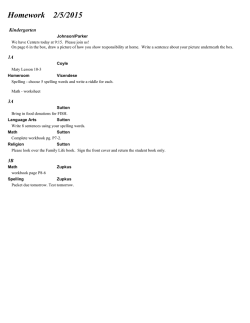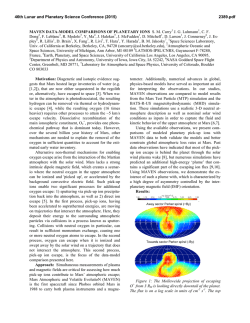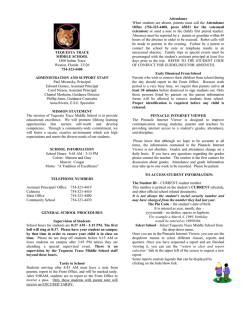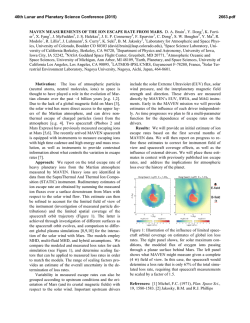
In the
In the United States Court of Appeals For the Seventh Circuit ____________________ No. 14-1455 UNITED STATES OF AMERICA, Plaintiff-Appellee, v. KENNETH CONLEY, Defendant-Appellant. ____________________ Appeal from the United States District Court for the Northern District of Illinois, Eastern Division. No. 12 CR 986 — Gary S. Feinerman, Judge. ____________________ ARGUED DECEMBER 1, 2014 — DECIDED JANUARY 30, 2015 ____________________ Before BAUER, KANNE and HAMILTON, Circuit Judges. KANNE, Circuit Judge. While incarcerated in Chicago’s Metropolitan Correctional Center (“MCC”) awaiting sentencing for a bank robbery, Kenneth Conley escaped by scaling down seventeen floors of the building on a “rope” made of bed sheets. Conley pled guilty to the escape and was given a 41-month sentence, to be served consecutively to his sentence for bank robbery. 2 No. 14-1455 On appeal, Conley challenges his escape sentence on two grounds. First, he contends that the district court relied on the wrong provision of U.S.S.G. § 5G1.3 in imposing a consecutive, as opposed to a concurrent, sentence. Second, Conley argues that even if the district court applied the proper provision, the 41-month consecutive sentence was substantively unreasonable. We disagree and affirm the sentence. I. BACKGROUND On October 29, 2012, Conley pled guilty to one count of bank robbery under 18 U.S.C. § 2113(a). Conley was thereafter held in custody in Chicago’s downtown MCC while awaiting sentencing. During the early morning hours of December 18, 2012, Conley and his cellmate, Joseph Banks, escaped from the MCC. The men sawed through the bars in their narrow cell window and removed a section of concrete from the wall surrounding it. They fashioned a rope out of bed sheets, crawled through the opening, and scaled seventeen floors down the side of the building to the ground. Conley was at large for seventeen days before he was captured. Numerous law enforcement agencies, including the United States Marshals Service and the Federal Bureau of Investigation, conducted an exhaustive manhunt for Conley. Officers of the suburban Palos Hills Police Department discovered a disguised Conley hiding out in Palos Hills, Illinois. When they approached him, Conley provided a false name. He then ran from the officers and attempted to enter a No. 14-1455 3 family-occupied apartment. One of the apartment’s residents used physical force to block Conley’s entry. Conley was taken into custody, and the United States charged him with a single count of escape under 18 U.S.C. § 751(a). The United States Probation Office (“Probation”) had prepared an initial presentence report (PSR) for the bank robbery conviction prior to Conley’s escape. The PSR set his offense level at 32, based on the application of the career offender provision. It recommended a 2-level reduction for acceptance of responsibility. That, combined with Conley’s criminal history category of VI, resulted in a guidelines range of 168 to 210 months in prison. Not surprisingly, Probation prepared a new PSR following Conley’s escape, and on May 29, 2013, Judge Samuel Der-Yeghiayan held a sentencing hearing on the bank robbery conviction. The amended PSR contained a recommendation for removing the 2-level acceptance of responsibility reduction, and it also recommended adding 2 levels for obstruction of justice, on account of the escape. This resulted in a new guidelines range of 210 to 240 months, in part because the sentence for bank robbery is capped at 240 months. 1 The court imposed a sentence of 240 months, citing the escape as evidencing a likelihood of recidivism and a lack of respect for the law. We upheld that sentence on appeal. U.S. v. Conley, 541 F. App’x 699 (7th Cir. 2013). 1 The sentencing judge indicated that were it not for the 240-month cap, he would have been inclined to impose an even lengthier sentence. 4 No. 14-1455 Conley pled guilty to the escape on October 21, 2013, pursuant to a plea agreement. On February 24, 2014, Judge Gary Feinerman conducted Conley’s sentencing hearing. The crime of escape carries a base offense level of 13. Conley qualified as a career offender, because he had at least two prior felony convictions for crimes of violence: three 1996 armed robbery convictions and the 2012 bank robbery conviction. The career offender designation raised his offense level to 17. The PSR recommended a 3-level reduction for acceptance of responsibility, bringing the offense level to 14. The offense level 14 and criminal history category VI resulted in a guidelines range of 37 to 41 months. Conley did not dispute the offense level or guidelines range calculation. The primary dispute concerned whether Conley’s sentence for the escape should be imposed consecutively to or concurrently with his bank robbery sentence. Because Conley had a prior undischarged term of incarceration, the court was required to determine which of the three subsections of U.S.S.G. § 5G1.3 applied to Conley’s sentencing. Both parties agreed that subsection (a) did not apply. 2 Subsection (b), if applied and satisfied by Conley, would have recommended that his two sentences run concurrently. 2 Subsection (a) applies when the instant offense was committed during a term of incarceration, or following sentencing (but before commencing service of the sentence) for another offense. Because Conley had not yet been sentenced at the time of his escape, the parties agreed that this subsection did not apply. 5 No. 14-1455 After considering objections from Conley, the court determined that subsection (b) did not apply. The court then applied the remaining provision, subsection (c). That provision instructs the court to impose a concurrent, partially concurrent, or consecutive sentence as required “to achieve a reasonable punishment for the instant offense.” U.S.S.G. § 5G1.3(c). After considering the 18 U.S.C. § 3553(a) factors and discussing its discretion to impose a concurrent or consecutive sentence, the court imposed a within-guidelines sentence of 41 months, to be served consecutively to the bank robbery sentence. Conley appeals the district court’s determination that U.S.S.G. § 5G1.3(b) did not apply. In the alternative, he challenges the 41-month consecutive sentence as being substantively unreasonable. II. ANALYSIS A. U.S.S.G. § 5G1.3(b) versus § 5G1.3(c) This court reviews de novo whether a district court followed proper sentencing procedures, including whether it correctly determined the applicable provision of U.S.S.G. § 5G1.3. United States v. Nania, 724 F.3d 834, 840 (7th Cir. 2013). Conley was serving a term of imprisonment for the bank robbery at the time that he was sentenced for the escape. When a defendant is serving a term of imprisonment and is 6 No. 14-1455 facing sentence on another offense, under certain circumstances U.S.S.G. § 5G1.3 recommends that the court should impose a concurrent sentence, as opposed to a consecutive one, for the other offense. U.S.S.G. § 5G1.3(b) provides in pertinent part: If subsection (a) does not apply, and a term of imprisonment resulted from another offense that is relevant conduct to the instant offense of conviction under the provisions of subsections (a)(1), (a)(2), or (a)(3) of § 1B1.3 (Relevant Conduct) and that was the basis for an increase in the offense level for the instant offense under Chapter Two (Offense Conduct) or Chapter Three (Adjustments), the sentence for the instant offense … shall be imposed to run consecutively to the remainder of the undischarged term of imprisonment. 3 § 5G1.3(b). As we recently stated in United States v. Rachuy, in order to obtain the benefit of subsection (b), a defendant must satisfy both requirements of this provision. 743 F.3d 205, 212 (7th Cir. 2014). That is, the conduct underlying the prior offense for which the defendant is already incarcerated must be relevant conduct to the instant offense; and that prior offense must have served as the basis for an increase in the offense level assigned to the instant offense. Here, for 3 This provision has since been amended, which we discuss in greater detail below. No. 14-1455 7 subsection (b) to apply, the bank robbery must be relevant conduct to the escape, and the bank robbery must have served as the basis for an increase in the offense level for the escape. As to the first requirement, Conley argues that the bank robbery is relevant conduct to the escape. Conley appears to argue that because he escaped from custody while incarcerated for the bank robbery, there is some degree of factual overlap between the two courses of conduct. We disagree. The bank robbery conduct was completed before his escape conduct, as evidenced by the fact that Conley had already pled guilty to the bank robbery charge at the time of his escape. None of the “Relevant Conduct” provisions of Section 1B1.3 support Conley’s apparent contention that incarceration for a prior offense constitutes relevant conduct for a subsequent offense. He therefore cannot establish the first requirement of Section 5G1.3(b). Likewise, Conley cannot establish the second requirement of Section 5G1.3(b), that the bank robbery served as the basis for an increase in the offense level assigned to the escape. Conley argues that because the bank robbery conviction was one of several offenses that qualified him as a career offender, and because that designation raised his offense level from 13 to 17, the bank robbery conviction increased his offense level for the escape. Once again, we disagree. Conley’s argument ignores subsection (b)’s specific language. That provision states that prior relevant offense conduct “that was the basis for an increase in the offense 8 No. 14-1455 level for the instant offense under Chapter Two (Offense Conduct) or Chapter Three (Adjustments)” can provide the basis for a concurrent sentence. § 5G1.3(b). Conley’s increased offense level was due to enhancements imposed under Chapter Four (Career Offenders and Criminal Livelihood), not Chapters Two and Three. By the plain language of the provision, then, his career offender enhancement cannot provide the basis for fulfilling subsection (b)’s “increase” requirement. We conclude by noting that Section 5G1.3(b) was recently amended, effecting relatively significant changes for defendants who are subject to prior undischarged terms of incarceration. Effective November 1, 2014, the “increase requirement,” or the requirement that the prior offense conduct resulted in an increase in offense level for the instant offense, has been stricken from the provision. U.S.S.G. app. C amend. 787 (Nov. 1, 2014). Therefore, in order to meet the requirements for a consecutive (or adjusted) sentence under the amended subsection (b), a defendant need only show that the prior undischarged term of imprisonment resulted from another offense that qualifies as “relevant conduct” to the instant offense. Because Conley was sentenced prior to November of 2014, this amendment does not apply to him. See U.S.S.G. § 1B1.11(a) (stating that the “court shall use the Guidelines Manual in effect on the date that the defendant is sentenced.”) In addition, because Conley could not fulfill subsection (b)’s requirement that the prior offense be “relevant conduct” to the instant offense, even with the No. 14-1455 9 benefit of Amendment 787, Conley would still not meet the provision’s requirements for a concurrent sentence. We conclude that Conley did not meet either of the requirements of Section 5G1.3(b). Because both parties agreed that subsection (a) did not apply, the district court correctly determined that Conley should be sentenced pursuant to subsection (c). B. Substantive reasonableness of the sentence We review the substantive reasonableness of a defendant’s sentence for an abuse of discretion. Gall v. United States, 552 U.S. 38, 46 (2007). Conley argues that under the circumstances he faced, the imposition of a 41-month, consecutive sentence was substantively unreasonable. Conley argues that under subsection (c), the district court abused its discretion in imposing a consecutive sentence. Subsection (c) provides: In any other case involving an undischarged term of imprisonment, the sentence for the instant offense may be imposed to run concurrently, partially concurrently, or consecutively to the prior undischarged term of imprisonment to achieve a reasonable punishment for the instant offense. § 5G1.3(c). Conley asserts that without the escape, he would have faced a guidelines range of 168 to 210 months for the bank 10 No. 14-1455 robbery; after the escape, he was sentenced to 240 months. Therefore, Conley argues, at least 30 months of his bank robbery sentence are “attributable to” the escape. Because of this overlap, Conley asserts, imposing the escape sentence to run consecutively to the bank robbery sentence constitutes greater punishment than is necessary under § 3553. In essence, he argues that he is being double-punished in a manner that § 3553 forbids. We disagree. The district court did not abuse its discretion in determining that a consecutive sentence was required to achieve a reasonable punishment, even taking into account that Conley’s robbery sentence was lengthened by the escape. The court below provided a thorough and carefully articulated discussion that weighed the relevant 3553(a) factors. For example, the district court discussed the nature and circumstances of Conley’s offense. It underscored the seriousness of escape from federal custody, as well as the fact that the escape did not arise from a momentary lapse in judgment. Conley carefully planned his flight (or more precisely, his seventeen-story descent), showed obvious disregard for the law in carrying it out, and absorbed the substantial attention of state and federal law enforcement agencies as they expended great resources to apprehend him. The court also considered the history and characteristics of the defendant. It noted that Conley was forty years old at the time of sentencing and would be nearly sixty when released from prison on the bank robbery sentence. The No. 14-1455 11 court acknowledged that the risk of recidivism often drops as a person passes certain age milestones. The court, however, weighed Conley’s age against the fact that he had amassed 27 criminal history points in reaching the criminal history category of VI, the highest category under the Guidelines. It noted that 27 points is more than double the threshold required to reach Category VI. It also concluded that Conley’s score likely underrepresented his actual criminal history, as he had many offenses for which no points were assigned. The court also evaluated the nature of the offenses making up his criminal history—armed robberies, aggravated assault, etc.—and that Conley had accumulated fifteen behavioral violations while previously incarcerated in federal prison. The court determined that, given this history and his continuing criminal behavior at age forty, Conley would be more likely than the average sixty-year old to reoffend after leaving prison. The court also considered the need for the sentence imposed in this case to fulfill the goals of criminal punishment. It considered the role of deterrence, which was particularly influential here, given the strong need to deter others from attempting to escape from federal custody. It also identified a need to protect the public from Conley’s potential future criminal conduct. While it could not predict with certainty whether Conley would reoffend (no judge can), the court noted that neither past prison terms nor incarceration at the MCC had yet served as adequate deterrents. 12 No. 14-1455 Finally, the court considered all of these factors as they applied to the types of sentences available—in this case, both the length of incarceration and whether Conley’s sentence should be served consecutively to or concurrently with the bank robbery sentence. It took into account that Conley’s sentence in the bank robbery was lengthy and that he might have to serve particularly “hard time” at a supermax correctional facility. It also acknowledged that Conley’s escape likely played a role in increasing his sentence for the bank robbery. It weighed those factors against Conley’s incorrigibly violent past; his “demonstrated and consistent disrespect for legal authority;” the seriousness of the offense of escape; and the need to protect the public. It concluded that a 41-month consecutive sentence was necessary to achieve a reasonable punishment for the escape. Indeed, strong policy reasons support the district court’s analysis. Conley is in effect arguing for a “freebie.” Because the maximum term allowed for escape falls far short of Conley’s bank robbery sentence, the imposition of a concurrent sentence would negate virtually all punitive force of a sentence for escape. With nothing to lose, that result would encourage defendants who face lengthy prison sentences to attempt escape. This is particularly true if, like Conley, they have already maxed out at criminal history category VI, or are already classified as career offenders. We cannot countenance this result. In light of the district court’s thorough and careful consideration of the 3553(a) factors, we find that the court No. 14-1455 13 did not abuse its discretion in sentencing Conley to a withinguidelines sentence of 41 months. Nor did it abuse its discretion in determining that the escape sentence should be served consecutively to the bank robbery sentence. Conley argues in the alternative that the district court was under a heightened duty to provide “compelling justifications” for the consecutive sentence. See United States v. Johns, 732 F.3d 736, 742 (7th Cir. 2013) (holding that a sentencing judge should support an above-guidelines sentence with compelling justifications); United States v. Miller, 601 F.3d 734, 740 (7th Cir. 2010) (same). Conley asserts that the (at least) 30 months of his bank robbery sentence that are “attributable to” the escape should be added to the 41 months he was given for the escape itself. He argues that when those two sentences are considered in combination, they amount to an above-guidelines punishment of 71 months for the escape. At a minimum, Conley argues, as a sort of constructive upward departure, the district court should have supported its sentence with “compelling justifications.” We disagree. Conley’s escape sentence does not amount to an upward departure. The Guidelines contemplate that separate criminal conduct may form the basis for sentencing enhancements and other increased punishment exposure. Prior criminal conduct, for example, can provide the basis for the assignment of criminal history points, thereby raising a defendant’s criminal history category. This may result in a higher guidelines range for a subsequent offense, even if the defendant has already served a sentence for that prior 14 No. 14-1455 criminal conduct. The district court was not required to provide “compelling justifications” for the within-guidelines sentence it imposed. III. CONCLUSION For all these reasons, we find that the court did not abuse its discretion in sentencing Conley to a 41-month term of imprisonment for the escape, to be served consecutively with the bank robbery sentence. AFFIRMED
© Copyright 2024





